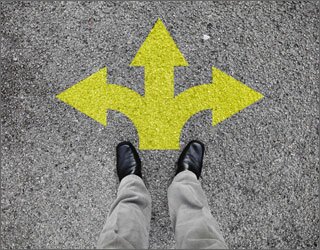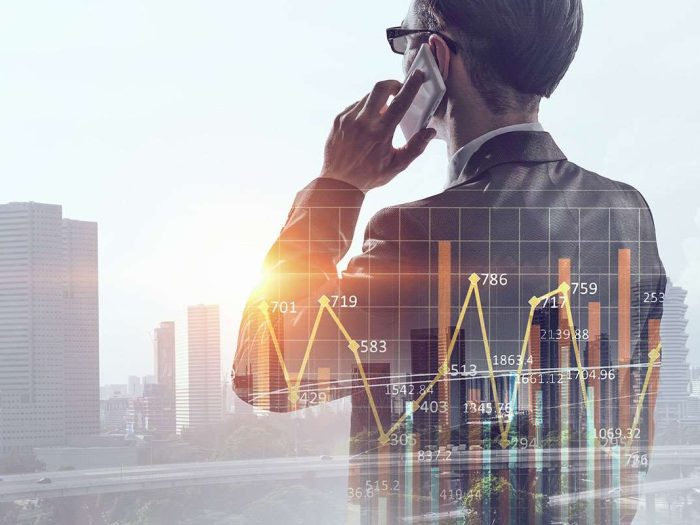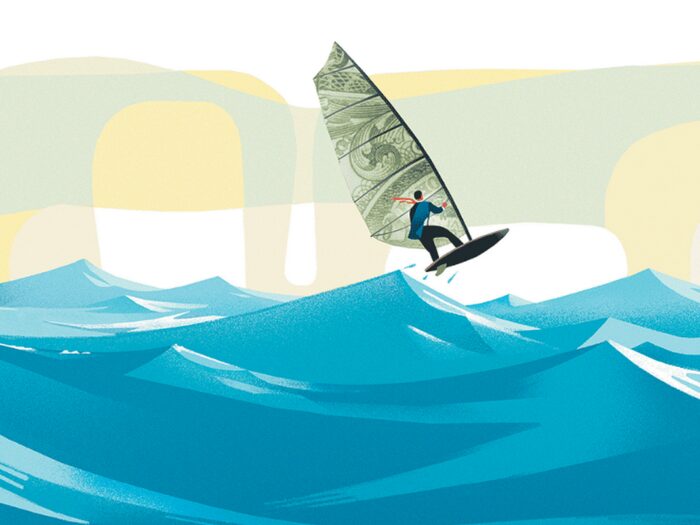Contents

Stop https://business-oppurtunities.com/ is also a pending market market buy/sell, closing the position opened. Market sell – A trader agrees to sell at the highest price currently asked by buyers. Yes, this is less profitable, but the trader so has a 100% guarantee that the trade will be executed. Authorised and regulated by the National Bank of Slovakia and Emerchantpay Ltd. which is authorised and regulated by the Financial Services Authority of the United Kingdom.

Similarly, if the FDM utilizes slippage parameters, it must disclose these parameters. In particular, the FDM must fully disclose how slippage parameters will be used with respect to limit orders. Gaps, in general, are sharp price breaks, which can also be termed as a difference in the closing price of a currency and the lowered opening price of the currency the next day, involving no trade in between. These gaps are shown as intervals or empty spaces in between the price movements.
Slippage can be calculated in two ways, either in dollar amount or percentage. Although to work out the percentage, you will first need the dollar amount. This is calculated by subtracting the price you expected to pay from the price you actually paid.

With IG, that won’t happen because our order management system will never fill your order at a worse level than the one you requested, but it may be rejected. Limits on the other hand can help to mitigate the risks of slippage when you are entering a trade, or want to take profit from a winning trade. With IG, if a limit order is triggered it will only be filled at your pre-specified price or one that is more favourable for you, as explained in the next section. Slippage isn’t necessarily something that’s negative because any difference between the intended execution price and actual execution price qualifies as slippage. After-hours trading refers to the buying and selling of stocks after the close of the U.S. stock exchanges at 4 p.m. NFA’s Business Conduct Committee recently issued several disciplinary Complaints for violations of these rule provisions based on strikingly similar conduct.
If the slippage is negative for you and surpasses an acceptable level, a broker should reject the trade and ask you to resubmit it. Also, a broker should have low slippage rates and fast execution speed that will limit the size of the slippage. It’s essential to consider slippage while trading, as it’s one of the factors that determine the final cost of your trade, including spread, swap and commission.
If a trader’s price is inadmissible, a requote occurs and a trader can either indicate another price or cancel a trade. Simply put, market volatility means the degree of the price fluctuations. If, during a minute, the price is 10 pips up and then 5 pips down, the volatility is low. If, during the same time, the price goes 100 pips up and then drops by 70 pips, the volatility is high. Therefore, if your stop loss/buy stop/sell stop works out at this time, the order may be executed not at the intended price, but at a far worse one. The same will happen if you try to put a market buy or a market sell; a moment ago, the price was good, but when you put the order, the price may be completely different.
How much stock volume should you look for to prevent slippage?
Once the price difference falls outside the tolerance level, the order will be rejected, and resubmission will be required at a new price. The price difference can be either positive or negative depending on the direction of the price movement, if you are going long or short, and whether you are opening or closing a position. Because slippage is unavoidable it is something you need to account for in your trading plan. Slippage will figure into your final trading costs, alongside other costs such as spreads, fees, and commissions. One way to do this is to look at the slippage you’ve experienced over the course of a month or longer and use the average slippage when computing your trading costs.

The only limitation of the limit orders is that your trade may never be filled if the price doesn’t reach the level you placed. When you place a sell limit order, you expect the price to rise to a certain level and pull back and move down. Thus, it’s an instruction to sell the asset at the specified price or higher.
Slippage Is Common Throughout Markets
This is, for example, why start-up capitalrs typically see more slippage around news events. As you can see, with FXCM, positive slippage occurs as frequently as negative slippage. We believe that this reflects positively on our forex execution model, which aims to provide fair and transparent execution.
Positive slippage – they pay a lower price than expected because the price dropped just before their order was executed. That said, if requotes happen in quiet markets or you experience them regularly, it might be time to switch brokers. If your order is filled, then you were able to buy EUR/USD at 2 pips cheaper than you wanted.
- You will also learn about TD Combo, an analogue of TD Sequential and how to apply them together to improve the signal quality.
- A helpful strategy is to use stop-loss or limit orders as a protection system to minimise the effect.
- Leading vs Lagging IndicatorsLeading and lagging indicators help traders measure the future and current performance of a currency pair, respectively.
The risks of loss from investing in CFDs can be substantial and the value of your investments may fluctuate. 75% of retail client accounts lose money when trading CFDs, with this investment provider. You should consider whether you understand how this product works, and whether you can afford to take the high risk of losing your money. Slippage generally occurs when there is low market liquidity or high volatility.
At AvaTrade, limit orders are filled at set prices or better ones, thus eliminating the risk of negative slippage which can arise when using market orders. While a limit order prevents negative slippage, it carries the inherent risk of the trade not being executed if the price does not return to the limit level. This risk increases in situations where market fluctuations occur more quickly, significantly limiting the amount of time for a trade to be completed at the intended execution price. Slippage does not denote a negative or positive movement because any difference between the intended execution price and actual execution price qualifies as slippage. When an order is executed, the security is purchased or sold at the most favorable price offered by an exchange or other market maker.
However, it’s significant that slippage doesn’t occur when you exit the trade. Slippage in trading is when an order is filled at a different price than the one expected. It tends to have a negative connotation, but slippage can also be favourable, resulting in getting a better-than-expected price. Slippage can occur when spread betting or trading contracts for differences on a range of financial markets, such as stocks or forex. Slippage occurs when the execution price of a trade is different from its requested price. It occurs when the market orders could not be matched at preferred prices – usually in highly volatile and fast-moving markets prone to unexpected quick turns in certain trends.
85% of retail investor accounts lose money when trading CFDs with this provider. This order type can be filled at the requested price, a better price, or a worse price depending on market conditions. Using this order type, especially around news events or other volatile market conditions, can subject you to negative slippage.
If you don’t trade during major news events, large slippage usually won’t be an issue, so using a stop-loss is recommended. If catastrophe hits, and you experience slippage on your stop-loss, you’d likely be looking at a much larger loss without the stop-loss in place. It’s also important to avoid trading during major news events, as they can be prime occasions for slippage.
What Is Slippage and how to avoid it?
Stop loss slippage can also happen when a stop loss level is not honored. Most brokers trading platforms are known to honor guaranteed stop losses as opposed to normal stop losses. Guaranteed stop losses are filled regardless of the underlying market’s conditions and brokers take responsibility for any stop loss that is incurred as a result of slippage. The unconditional market order is sent to the marketplace server for execution. The order at this point may be either, executed in full, executed partially, or rejected. The reason for rejection would be that the price at this time was no longer satisfying the embedded conditions when the market order was sent.

Using orders to manage riskForex risk management includes a robust set of rules and regulations that protect you against Forex’s negative impacts. Forex Profit CalculatorOn average, a Forex trader can make anywhere between 5 to 15% of the initial amount they invested in the market. 8 Top Commodity Trading StrategiesCommodity trading is one of the best ways to diversify your portfolio and protect yourself from losses incurred due to inflation. 5 Top ADX Trading StrategiesThe Average Directional Movement Index strategy measures the forex market’s overall strength.
Slippage default value set in the preferences and option Apply default Slippage to all Marker Orders enabled
Similarly, if the FDM requotes prices based on slippage parameters when the market has moved against it, then it must also requote prices when the market has moved in its favor. An FDM must also ensure that the customer is aware of how the FDM handles such circumstances prior to trading with the FDM. Accordingly, prior to entering into the first forex transaction with a customer, an FDM must disclose its policy with regard to orders that are received for a price that is no longer reflected on the platform.
Broker’s ability to fill client’s order in the market at the desired value and in the desired volume. A “healthy” slippage distribution can be identified with the help of graphs of their distribution. A fair broker should have no problem showing you these charts on request. Intuitive and packed with tools and features, trade on the go with one-swipe trading, TradingView charts and create custom watchlists.
The major currency pairs are EUR/USD, GBP/USD, USD/JPY, USD/CAD, AUD/USD, and NZD/USD. Market prices can change quickly, allowing slippage to occur during the delay between a trade order being processed and when it is completed. In finance, a spread usually refers to the difference between two prices of a security or asset, or between two similar assets. Slippage refers to all situations in which a market participant receives a different trade execution price than intended.
Don’t Enter Low-Liquidity Markets
Slippage in Forex is the difference between the trade’s expected price and the price at which the trade is finally executed. It can occur at any point in time but mainly occur during high volatility times. The Forex market is highly volatile during situations like a big news breakout, economical instability, political crises, or a social issue. The currency value deviates incredibly from its average price. In the Forex market, high volatility also occurs when there is a large order execution but isn’t enough volume to maintain the bid/ask spread. A large order execution occurs when a big buy or sell order gets completed, leading to a significant movement in the Forex market.
